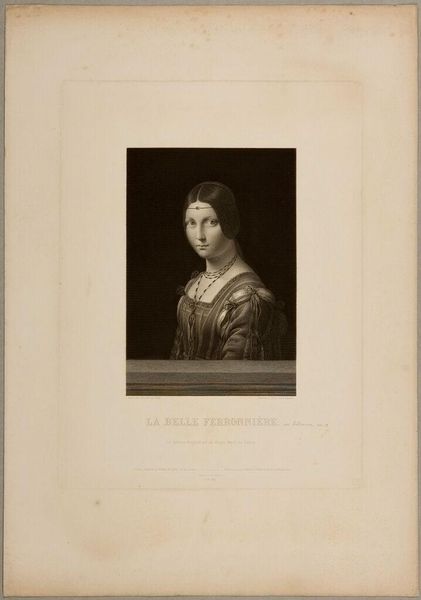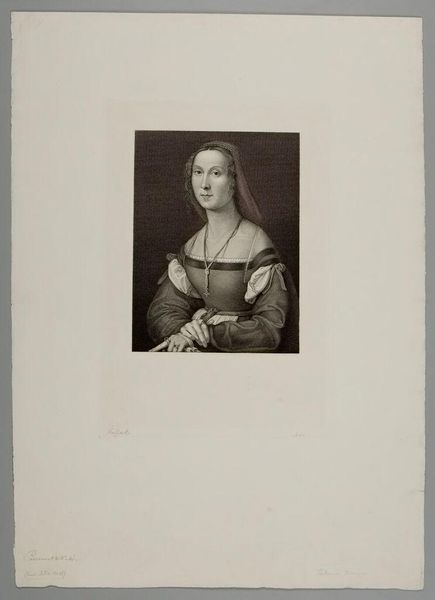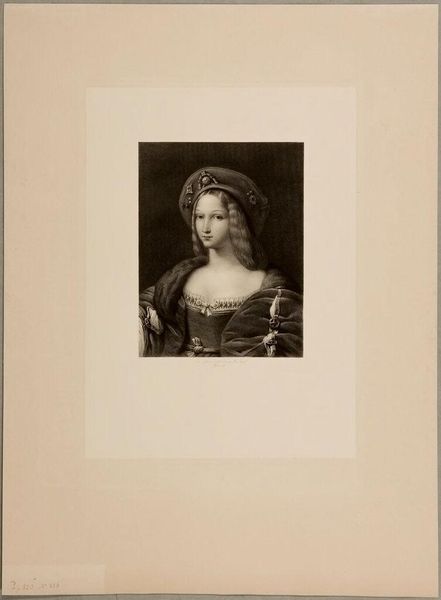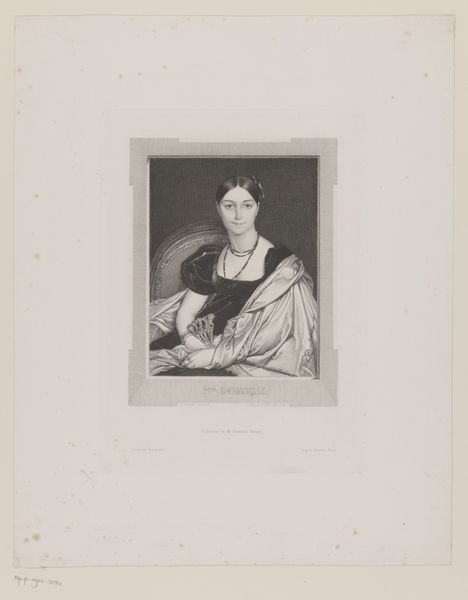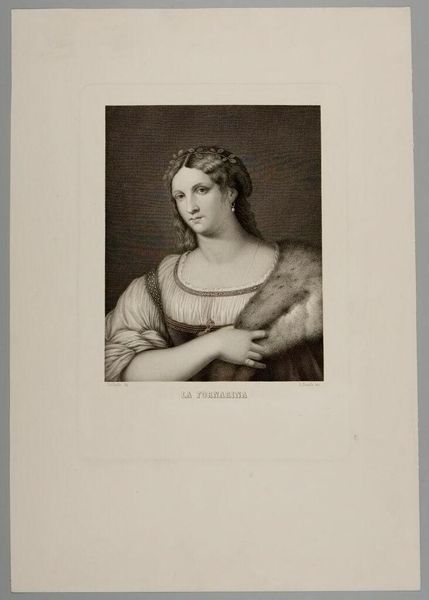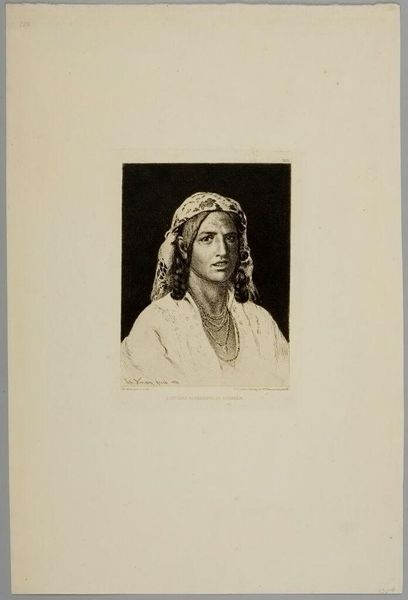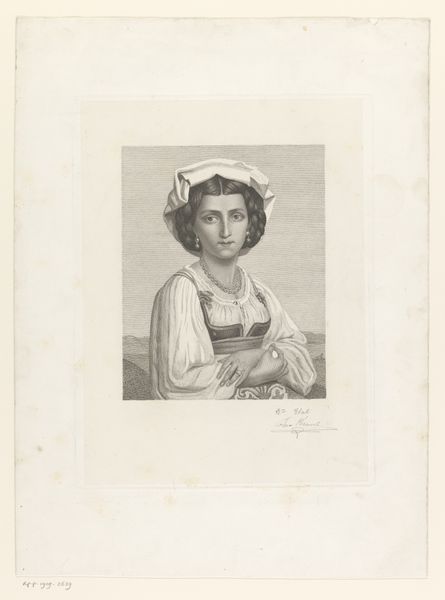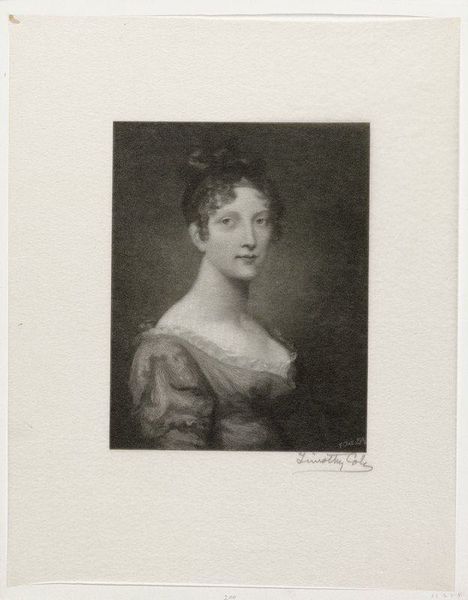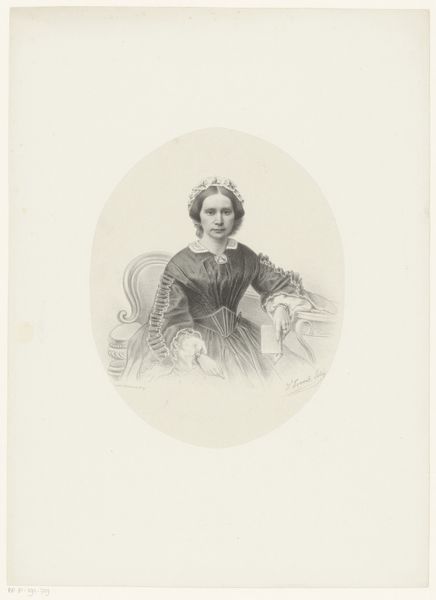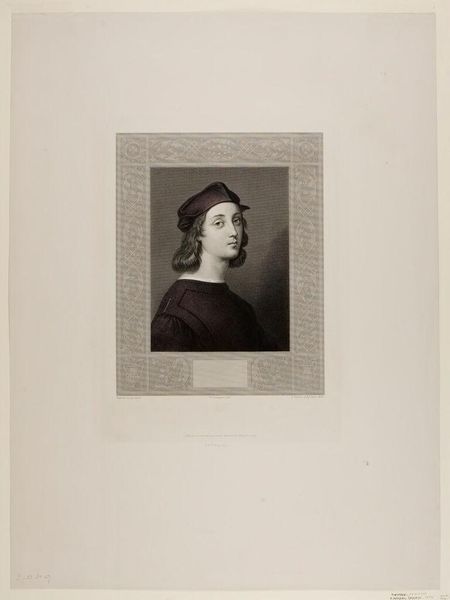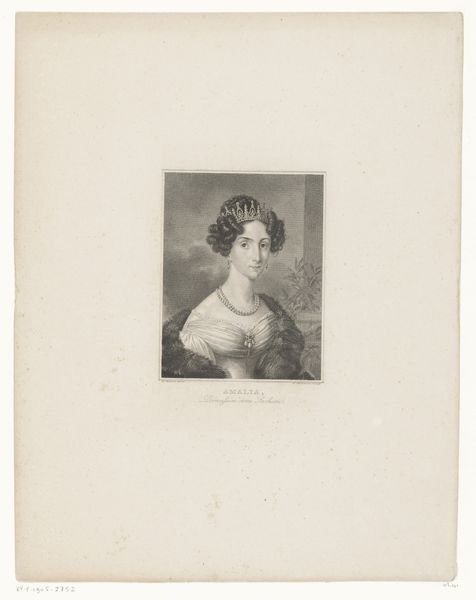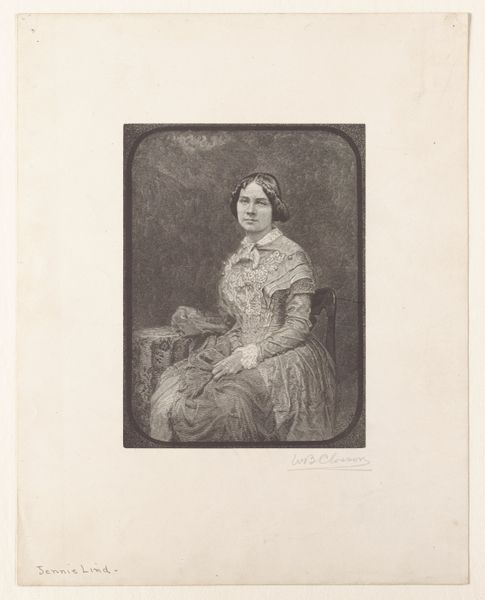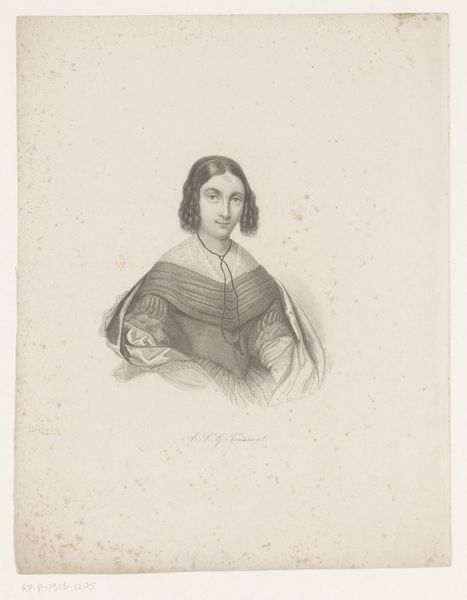
Copyright: CC0 1.0
Editor: This is *The Beautiful Feronniere* by François Eugène Augustin Bridoux, found at the Harvard Art Museums. It's a portrait of a woman, and I'm struck by how idealized she seems. What can you tell me about how this image circulates and its role in art history? Curator: It's interesting you mention "idealized." How does the image, through its circulation as a print, shape our understanding of beauty and femininity in a particular historical context, given the original, painted La Belle Ferronnière is often attributed to Leonardo da Vinci? Editor: That's a great question. I guess the print makes it more accessible and, in a way, more authoritative, right? As a supposedly perfect image? Curator: Precisely! The print participates in the construction of taste and the dissemination of cultural values. I mean, what does it mean for a work like this to be both an artwork in its own right and a reproductive technology? Editor: I hadn't thought about it that way. It's like the print is both the message and the medium, shaping how we see the original *and* how we understand art's role in society. Thank you.
Comments
No comments
Be the first to comment and join the conversation on the ultimate creative platform.
